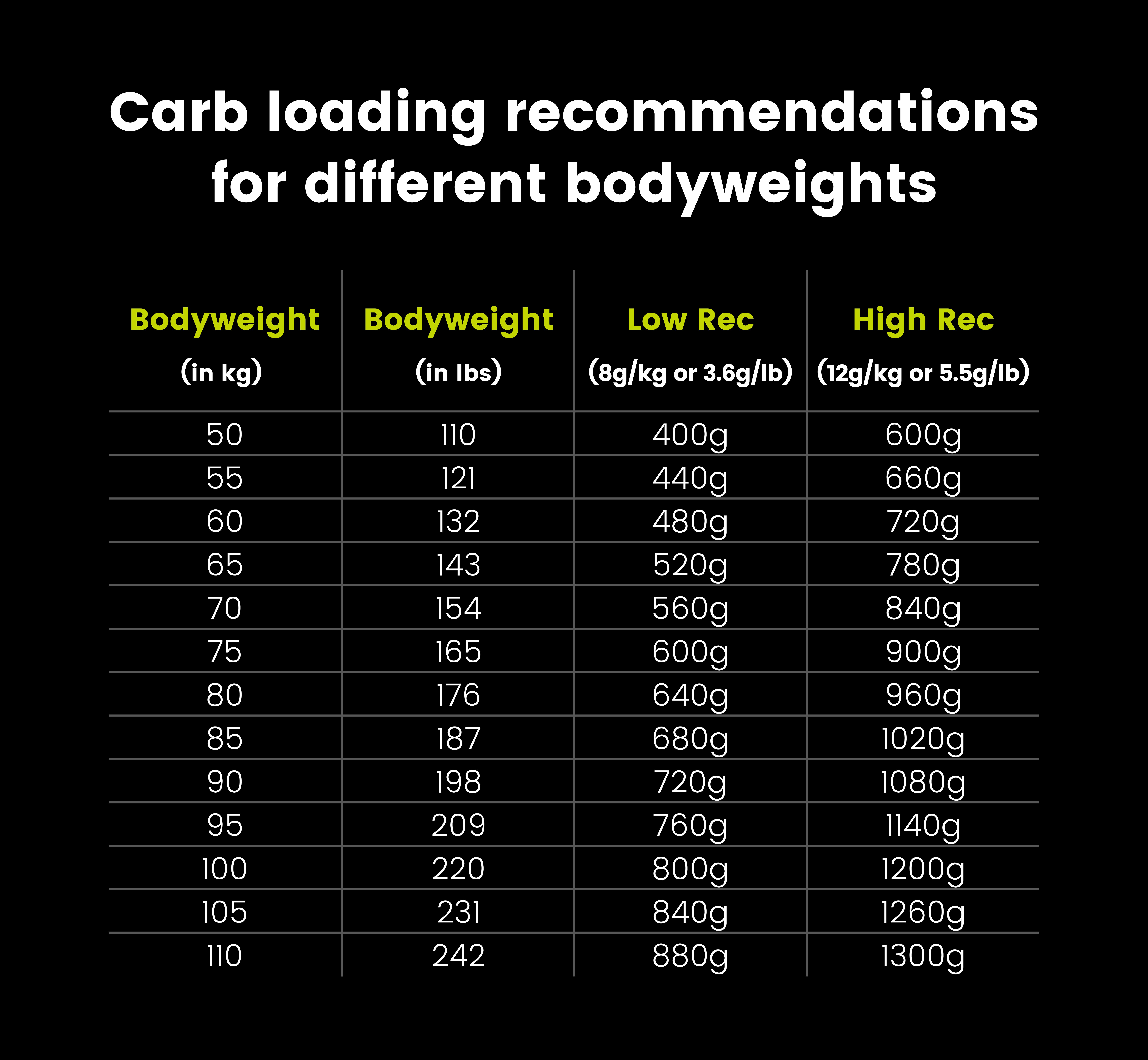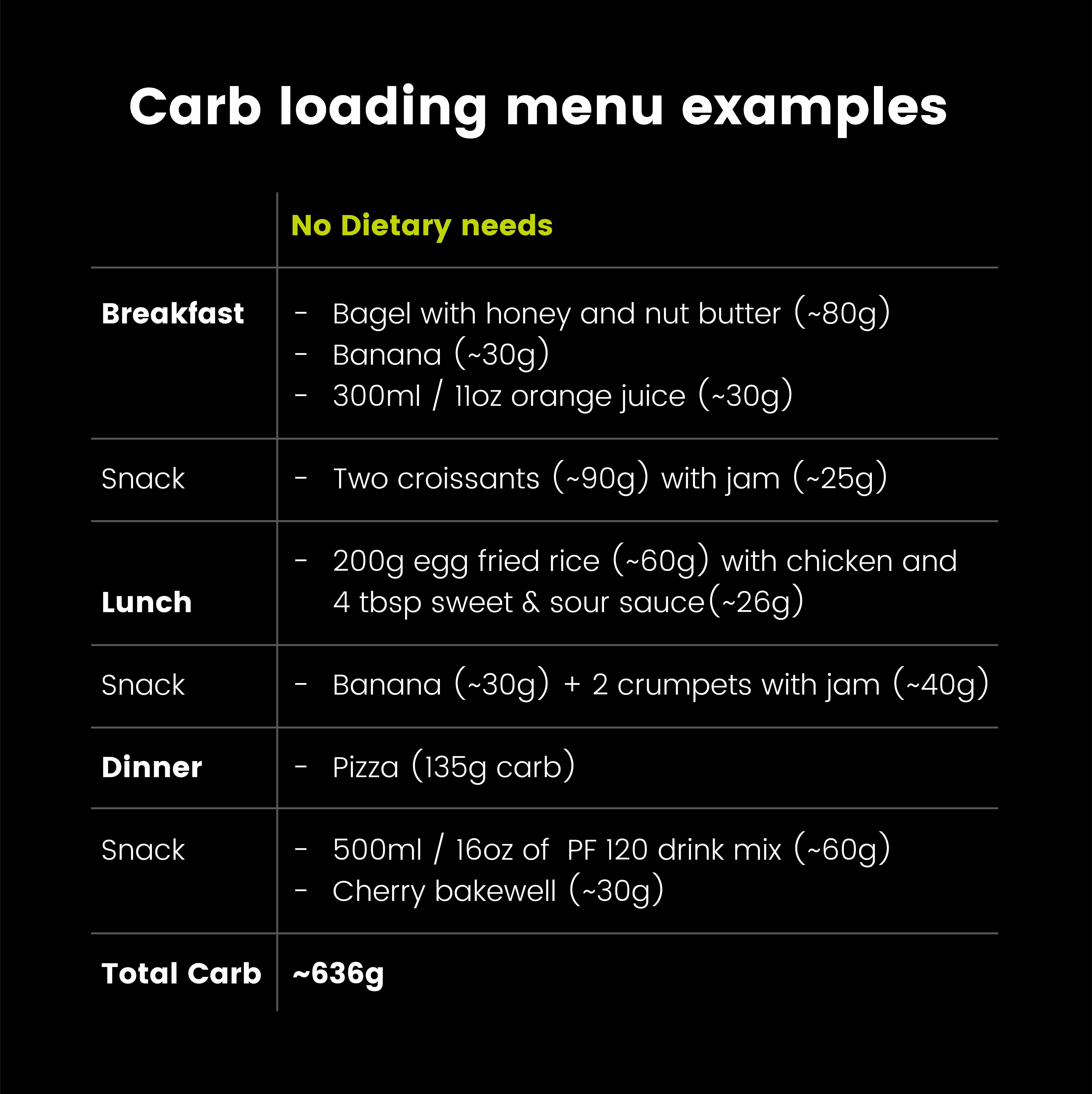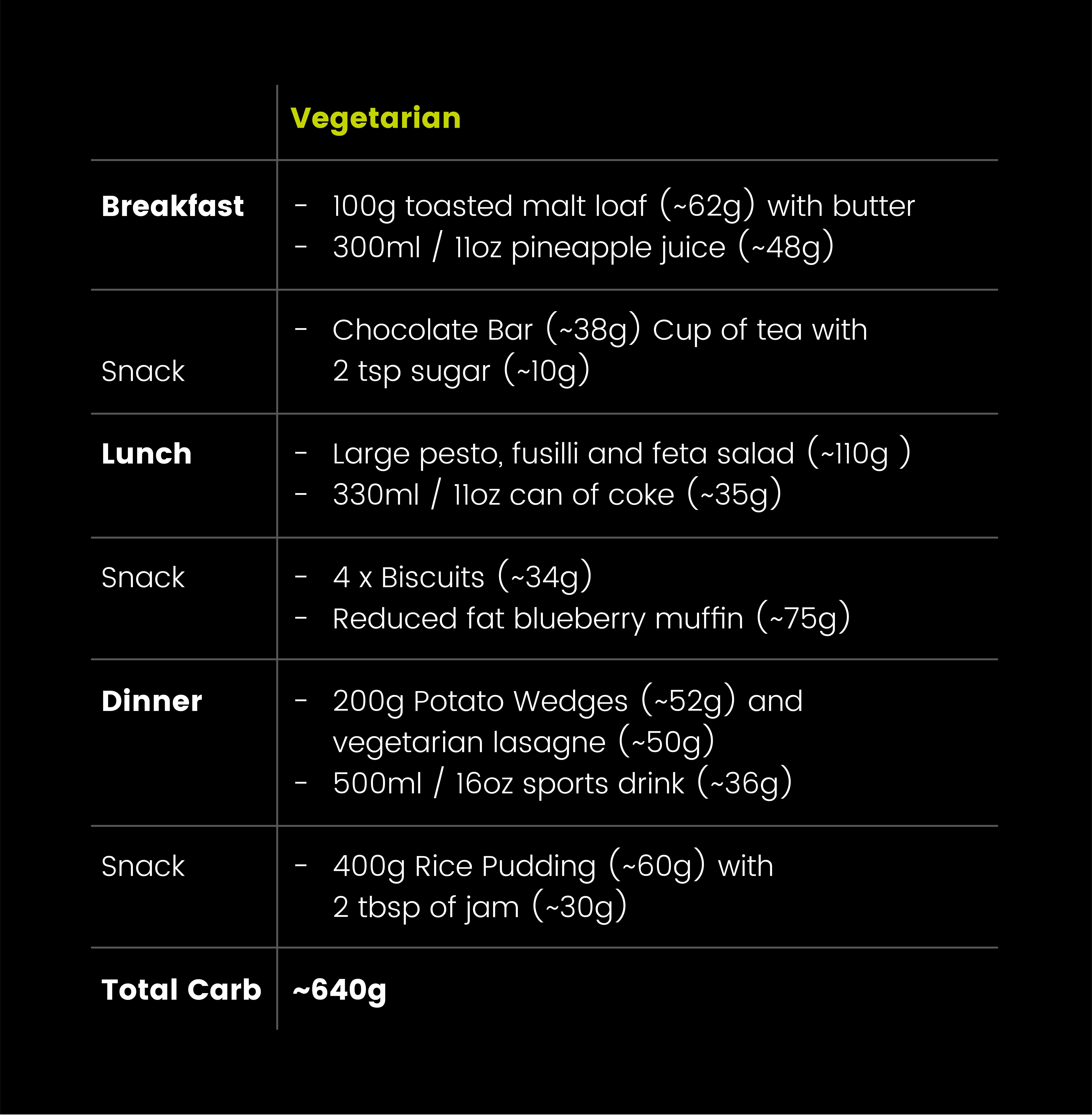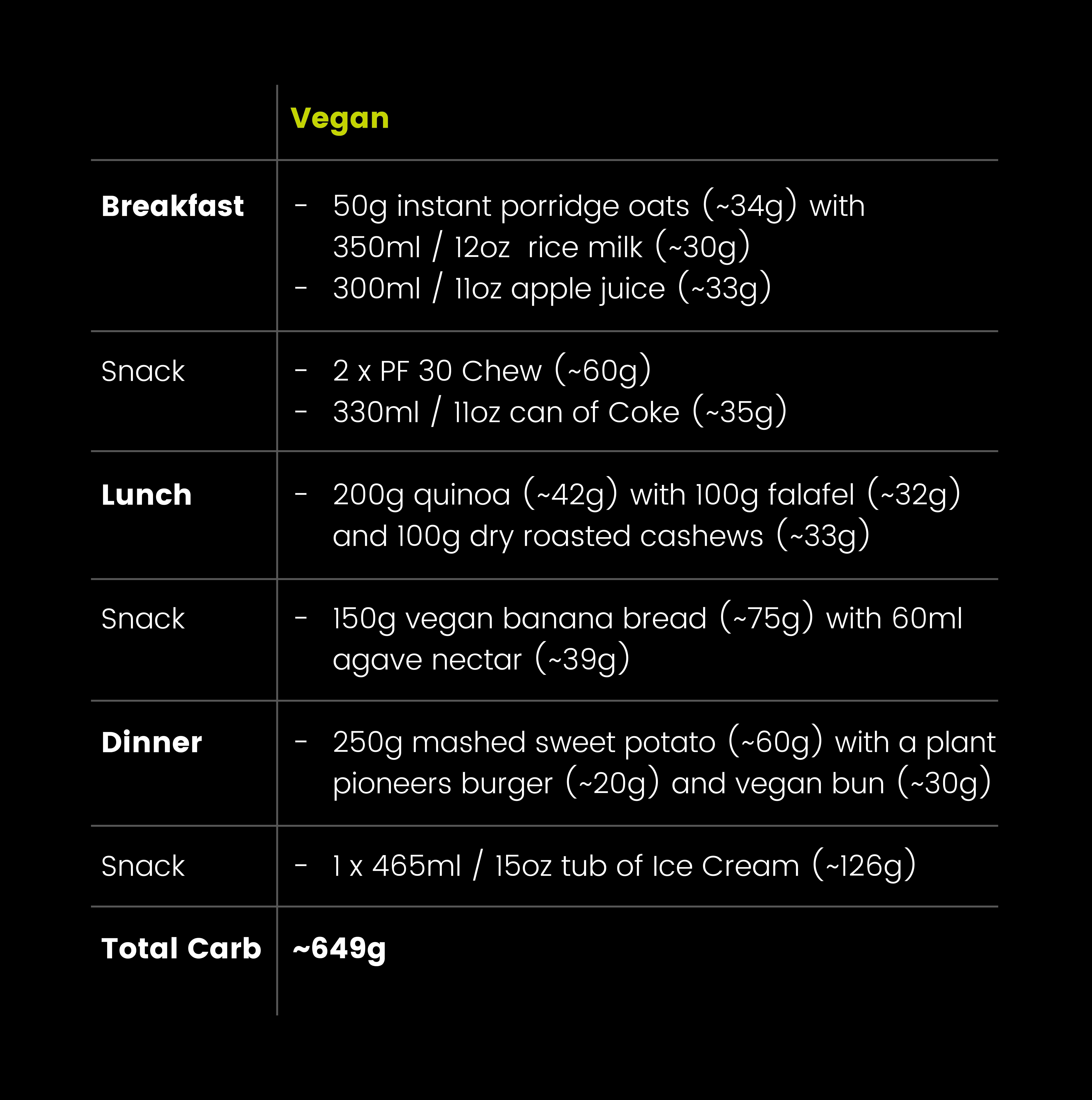In the days leading up to a race, I'll add extra potatoes, rice and pasta to my meals. My non-sporting friends assume this form of feasting is a result of my previous student lifestyle where it's vital to make the most of every feeding opportunity at all-you-can-eat buffets, but fellow endurance athletes will recognise the tell-tale signs of carbohydrate-loading.
Carb-loading is a well-known tactic used by endurance athletes. In our Fueling Survey, 62% of respondents told us that they carb-load before their events.
You probably know you should do it and, for the most part, why. But do you know how to carb-load effectively ahead of an endurance event?
In our survey, 18% of those who carb-load told us that they start doing so at least one week in advance of their event.
Starting that early really isn’t necessary, but it does perhaps emphasise that the methodology behind carb-loading can be something of a grey area.
So, to help clarify the best way of approaching carb-loading, I’ve taken a look at what the science and practical experience says about optimising your intake ahead of race day...
The origins of carbohydrate loading
With the abundance of sports nutrition products available, it’s easy to only focus on what you should be consuming (i.e. your exogenous carbohydrate) during your event.
Whilst making sure you get enough carbs on board is of course important, it’s key to recognise that the amount of internal (endogenous) carbohydrate you have stored within your muscles and liver at the start is crucial, particularly if your event is longer than 60-90 minutes.
Think of your glycogen stores as the fuel you have in the tank before a long journey. The more you start with, the longer you can keep going before you need to top-up. And for reference, your body can store ~500g of glucose as glycogen in your skeletal muscles, and ~100g in your liver.

The concept of carb-loading has been around for more than 100 years. In the 1920s, it became apparent that carbohydrate was an important fuel source for exercising muscles and that low blood glucose concentrations seemed to be linked to fatigue during marathon running.
Impressive work was carried out by August Krogh and Johannes Linghard who made the following observations:
The subjects observed distinct differences in the facility (or difficulty) with which the prescribed amount of work was performed, coincident with changes in diet, and noted that on fat diets the fatigue became considerable and sometimes excessive.
Subjects were generally very tired on the fat diet and much less tired or not tired at all when on carbohydrates.
It was determined that increasing dietary carbohydrate intake before a marathon, as well as consuming hard candies during the race, prevented weakness and fatigue.
But, despite these early observations, the importance of muscle glycogen and its relationship with exercise capacity were not confirmed until the 1960s, thanks to a group of Scandinavian researchers. They were the first to utilise the muscle biopsy technique to measure muscle glycogen content and describe its practical applications.
In the laboratory, athletes cycled on an ergometer for several hours at 75% of their maximum effort until the point of exhaustion, all the while having the glycogen content of the muscles measured.
When the athletes were fed a high-protein, low carb diet for a number of days before their exertions, followed by a high-carbohydrate diet, they were able to cycle far longer (three to four times as long when compared to just a high-protein diet).
They saw that this planned adjustment in diet, coupled with increased and then decreased training loads, could effectively increase the amount of glycogen stored in the muscles. A concept they called ‘supercompensation’.
To begin with, the literature wasn’t of much interest to endurance athletes, thought in part to be because the studies were originally written up in German.
But then British marathon runner Ron Hill reported utilising the Saltin-Hermansson diet (named after the scientists who “discovered” it, but also known as ‘the Swedish diet’) ahead of his marathon race at the 1969 European Athletics Championships in Greece.
Hill had been tailing the leader for the duration of the run when, during the last six miles, he was able to finish strongly and win the gold medal in 02:16:47. This time wasn’t especially great, even in those days, but the conditions were incredibly tough and what was impressive was Hill’s dominant finish and avoidance of a phenomenon that every marathon runner at the time was familiar with: ‘hitting the wall’.
Nowadays, the term ‘hitting the wall’ is used interchangeably with ‘bonking’ and it’s recognised as the point at which there’s a rapid and dramatic drop-off in your performance due to your muscle glycogen levels becoming critically depleted. Anyone who’s been unfortunate enough to experience the dreaded ‘bonk’ will know that it feels like your muscles are slamming the brakes on.
Word spread of Hill’s diet and his incredible Athens run, with athletes making use of a similar approach ever since. Basically, you can thank the late Ron Hill for pasta parties becoming a regular occurrence on the evening before events!

When (and why) should you carb-load?
The regimen that Hill had followed is what’s now considered the ‘classic’ carbohydrate-loading approach, consisting of:
- A glycogen-depleting phase — 3 days of intense exercise coupled with a very-low carbohydrate consumption
- Followed by 3 days of tapered physical activity with a high-carbohydrate intake
The evidence suggests that highly trained athletes don't need to go through the depletion phase; improved physical fitness is an additional stimulus for enhanced muscle glycogen stores.
These athletes just need to eat a greater proportion of carbohydrate for ~2-3 days before a race to adequately store as much glycogen as their muscles are capable of so they can capitalise on that supercompensation effect.
The combination of eating more carbohydrate, coupled with a reduction in training in the final days before competition (most athletes will taper ahead of key races), enables your muscles to boost your glycogen levels.
Research has shown that carb loading effectively can prolong exercise capacity by up to 20%, and has improved time trial performance by 2-3% when taking part in high intensity events >60mins.
How to carb-load
There are some key factors to keep in mind when it comes to carb-loading effectively...
Increase the proportion of carbohydrate in your diet
As the name suggests, carb-loading requires ‘loading up’ on carbohydrates. But with that said, we know that some athletes who are told that “more is better” can take this advice to the extreme! Too much carbohydrate in the race build-up can be counterproductive. Eating an unusually high amount of carbohydrate before an event could actually backfire and hinder your performance by causing GI distress.
If you’re someone new to carb-loading, a really simple implementation could be to add a moderate extra portion of carbohydrate (white rice, potato, pasta) to each meal, at the expense of other foods in the last couple of days prior to competition starting. You could even use the Carb Only Drink Mix as your extra carbohydrate serving to take advantage of liquid calories or incorporate a few easy-to-digest carbs in the form of gels or energy chews.
Cut back on foods high in fat
Eating more carbohydrates doesn't mean overeating, or eating as much as possible. It means ensuring a greater proportion of your daily calories are coming from carbohydrate at the cost of some fat.
The usual advice is to increase your carb intake to ~8-12 grams per kilogram of body mass to fully replenish your muscle glycogen stores. As will become obvious in practice, to achieve that and not overeat, cutting back on higher fat foods is unavoidable.

Taper your training
Increasing the proportion of carbs in your diet alongside a taper in your training load, which you’re likely to do naturally, shifts the balance advantageously in the direction of storing more glycogen.
Reduce the fibre content of your diet
If you do suffer with GI issues, or have a sensitive stomach, it’s also worth reducing your fibre intake the day or two beforehand.
James Phillips, Head of PF&H Athlete Support and avid endurance athlete, shares his own experience of carb-loading...
Almost regardless of race distance, I've generally followed what could be viewed as a 'carb-load' before big events. As I'm tapering down for a big race, usually ~3-7 days depending on the priority of the race, I would always start to remove most of the fat and fibre from my diet and replace this with more simple carbohydrate with the view that it's less likely to result in GI distress on race day and to slightly increase my overall carb intake.
I feel that when my training load has dropped ~50%, I'm burning less carbohydrate in training so indirectly I know I'm storing more. This seems to have worked for me in the past as I (touch wood...) rarely end up with stomach issues and don't feel overly bloated come race day.
Carb-loading menu examples
Below are some examples of carb-loading menus for athletes with different dietary requirements to consider:



Other considerations
It also helps if you routinely eat a carb-rich diet around training. If you follow a low-carb diet but want to utilise carbohydrate in the build-up to race-day, then it’s a good idea to start introducing those a few weeks in advance and train your gut to give it time to adapt.
Lastly, each gram of glycogen is stored with at least 3 grams of water, which can make weight gain a noticeable response to glycogen supercompensation in many athletes. Don’t let this panic you ahead of race-day, it’s a normal response, and should be taken as a good indicator that you’re well-stocked with energy!
You’ll have noticed that this piece discusses carbohydrate loading in the 2-3 days before an event. We’ve discussed what to eat in the 3-4 hours before competing - as well as immediately before the start - here.
